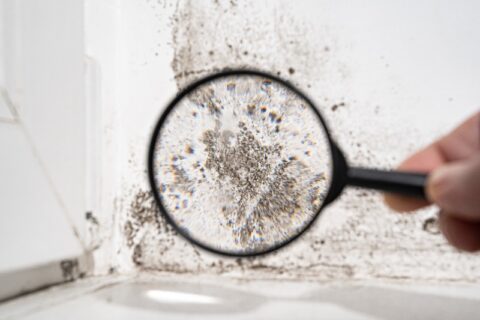How to Prevent Mold in Your Home
Mold is a silent intruder, sneaking into your home and causing respiratory illnesses and other health issues before you even know it’s there. This unwanted guest thrives in damp, dark conditions that most homes unknowingly provide. Make sure mold doesn’t become a recurring problem with the following tried-and-true methods to promote a mold-free home.
Spot Trouble Zones
Certain places are more susceptible to mold growth than others. Crawlspaces, attics, kitchens, and bathrooms all make the list. Search each one frequently for signs of mold, including lingering musty odors, visible growth, and flu-like symptoms that dissipate when you leave the space.
Address Standing Water
Moisture is a key ingredient for mold growth. Without it, spores remain inactive and harmless. If any part of your home gets wet, make sure the affected area dries within 24 to 36 hours. This includes spills, leaky plumbing, and floodwater. Here are some key mold prevention tips:
- Remove water-damaged items from your home so they can dry more quickly outside.
- Replace carpets and upholstery that have been soaked and cannot be dried right away.
- Mop up the shower floors and walls after showering.
- Fix leaky pipes, drains, and garbage disposals immediately.
- Don’t let wet clothes linger in the washing machine.
Improve Ventilation
Activities like cooking, showering, and washing clothes add heat and humidity to the air. Simply running the exhaust fan or opening a window in the kitchen, bathroom, or laundry room helps in the fight against mold. Also, make sure the clothes dryer vents outside, not into the attic or crawlspace, to prevent indoor humidity buildup.
Choose Mold-Resistant Materials
When remodeling or performing home improvements, consider using materials that deter mold. Options include mold-resistant sheetrock and mold-inhibiting paint. These products are especially beneficial in bathrooms and laundry rooms, ensuring longer-lasting protection in these moisture-prone areas.
Monitor the Humidity
Maintaining indoor humidity levels below 50 percent significantly reduces the risk of mold growth. Running the air conditioner or dehumidifier helps, and a simple hygrometer from your local hardware store allows you to monitor the levels. If you notice clammy skin, a heavy feeling in the air, or condensation on pipes and window panes, it’s time to take more drastic humidity control measures. Here are some tips:
- Seal cracks in your home’s exterior to prevent moist outdoor air from entering.
- Avoid over-watering indoor plants.
- Place moisture-absorbing desiccants in closets and storage areas.
- Avoid line-drying clothes indoors.
- Install a vapor barrier in the crawlspace.
Drain Rainwater Away
Mold isn’t just a concern inside your home—it can also negatively impact the exterior. Regularly clean and inspect your gutters, install downspout extenders, and ensure the soil slopes away from the foundation.
Mold Removal and Remediation
If you find mold in your San Diego-area home, turn to Pacific Flood Restoration for mold remediation services. We are transparent, ethical, and easy to work with. We can manage large or small projects while retaining our owner-operated charm. If you’re ready to control mold growth once and for all, contact us at 760-815-3033. We’ll inspect your home for mold, offer cost-effective remediation options, and work with you to ensure the problem never happens again.


